Spanish Cedar Wood
- September 11, 2023
- 0 comment

Spanish Cedar, botanically known as Cedrela odorata, is a wood revered by both botanists and industry professionals alike. When freshly cut, it presents an alluring reddish-to-pinkish-brown hue, which matures to a deeper reddish-brown upon light exposure. Occasionally, one might notice dark streaks or bands that accentuate its attractive grain pattern. One of Spanish Cedar’s most distinctive characteristics is its spicy aroma, a scent that has become synonymous with luxury, especially given its prevalent use in crafting elegant cigar boxes.
Texture
The feel of Spanish Cedar is medium to fine. Its slightly oily nature can be detected when touched. This oiliness not only enhances the wood’s tactile experience but also boosts its resistance to decay and pests, such as termites.

Bark
If you were to observe a Spanish Cedar tree, its bark is distinctively rough. The grayish-brown color combined with deep, vertical fissures makes it recognizable.
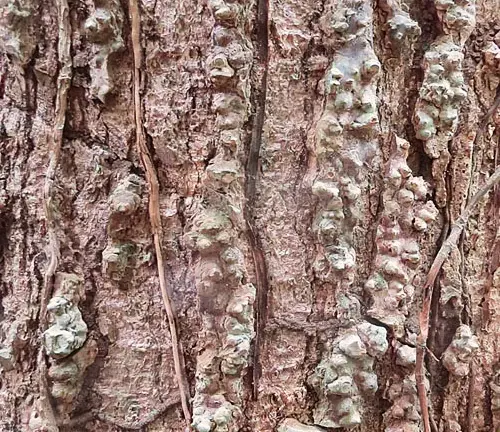
Furniture
Spanish Cedar is a favorite among furniture makers. Its workability, combined with its attractive color and grain, make it an excellent choice for crafting elegant furniture. Plus, for items like chests and wardrobes, the wood’s aroma acts as a natural repellent for pests.

Weapon
Unlike hardwoods such as oak or hickory, Spanish Cedar is relatively soft, which means it isn’t ideal for crafting weapons that require durability and strength.
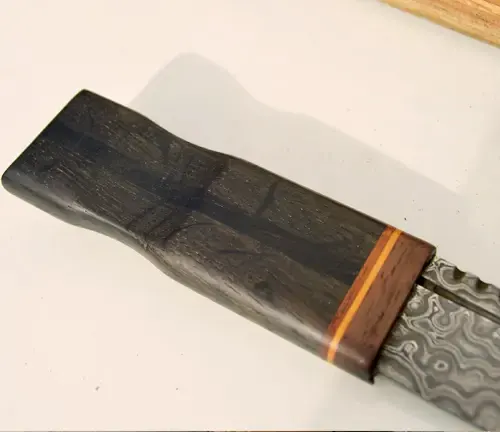
Firewood
Spanish Cedar isn’t a preferred choice for firewood. When burned, its strong aromatic properties can become overpowering, which might not be ideal for everyone.
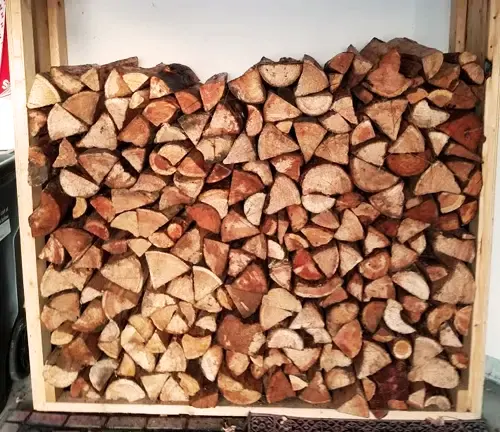
Construction
In construction, Spanish Cedar is utilized for specific applications that benefit from its natural moisture and pest resistance. For instance, window frames and exterior paneling made from this wood can last longer with minimal chemical treatments.

Plywood
When it comes to veneer and plywood, Spanish Cedar is sometimes selected, particularly when the plywood is meant for aesthetic or aromatic purposes.

Board
Spanish Cedar boards find their way into many woodworking projects. Their smooth texture and consistent grain make them an excellent choice for cabinetry, intricate moldings, and other millwork.
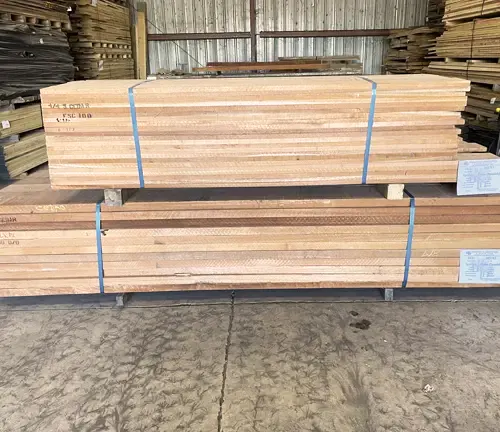
Railroad Cross Ties
When constructing the very backbone of our railway systems, the emphasis lies heavily on durability and resilience. Railroad ties, thus, have to withstand not just the weight of massive locomotives but also the test of time and elements. Spanish Cedar, despite its numerous charming attributes, isn’t the frontrunner in this rigorous application. Its softer nature means it may not endure the relentless stress as effectively as some of its hardwood counterparts. Woods like oak, renowned for their steadfastness, are generally favored. However, for scenarios where aesthetics or aroma play a role, perhaps in tourist or heritage rail settings, Spanish Cedar could introduce a touch of elegance amidst the ruggedness of the tracks.
Pallet
Pallets are typically made from more economical wood types since they’re mainly functional and not for show. Spanish Cedar isn’t a primary choice here.
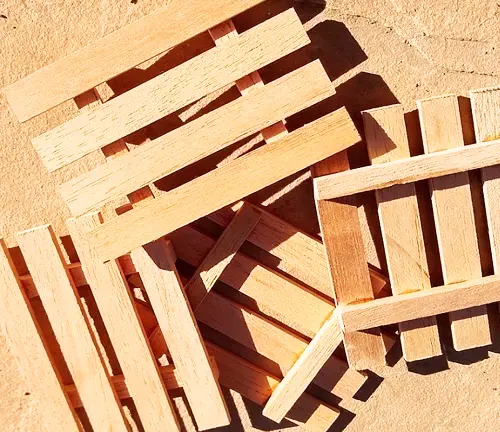
Fencing
While Spanish Cedar can be used for fencing due to its aesthetic and functional properties, regional availability and cost often dictate more common choices, like treated pine or red cedar.

Wood Decking
For decks, Spanish Cedar provides an elegant finish and natural resistance to decay. However, being softer than some decking woods, it can be prone to dents or scratches if not handled with care.

Live Edge Siding
Live edge siding provides a rustic and natural aesthetic to buildings. While Spanish Cedar isn’t the most popular choice, it can offer a unique finish with its color, grain, and aroma when used for this purpose.

Beams
For architectural beams, especially those exposed to moisture or potential pest issues, Spanish Cedar can be considered. However, due to its softness relative to other woods, it might not be the top choice for heavy structural support.
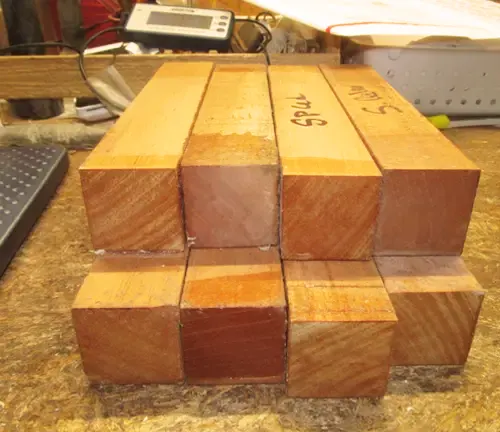
You can check our Cedar Lumber for an even more comprehensive look into the world of wood and its countless applications. There’s a wealth of knowledge waiting for you there, so dive right in and embark on your next enlightening read. Happy exploring
Frequently Asked Questions
- What makes the aroma of Spanish Cedar so unique?
Spanish Cedar’s unique spicy aroma comes from natural oils present in the wood, which also provide its insect-repelling properties. - Is Spanish Cedar actually a type of cedar?
Interestingly, despite its name, Spanish Cedar is not a true cedar. It belongs to the Meliaceae family, making it a relative of mahogany. - Why is Spanish Cedar commonly used in cigar boxes?
Spanish Cedar regulates humidity well, making it ideal for cigar boxes. Its aroma also enhances the flavor of cigars over time. - How does Spanish Cedar compare to other woods in terms of durability?
Spanish Cedar offers moderate durability, with natural resistance to decay and insects, but it isn’t as hard as some other popular woods. - Can Spanish Cedar be used for musical instruments?
Yes, its resonance and workability make it a choice wood for certain musical instruments, especially guitar necks and bodies. - Is Spanish Cedar an endangered species?
Some regions have reported over-harvesting, leading to its vulnerability. Sustainable and certified sources are recommended when purchasing Spanish Cedar. - What is the best way to finish or treat Spanish Cedar for outdoor use?
While Spanish Cedar has a natural resistance to decay, it’s advisable to use a sealant or finish for outdoor applications to protect against UV rays and enhance its lifespan. - Does Spanish Cedar’s aroma fade over time?
While the intense aroma may diminish somewhat with age, Spanish Cedar typically retains its characteristic scent for many years. - Is Spanish Cedar suitable for flooring?
Due to its softer nature relative to other hardwoods, it’s not the primary choice for flooring. However, it can be used in low-traffic areas or for decorative purposes. - How does Spanish Cedar impact the environment?
When sourced responsibly from certified forests, its impact is minimal. However, over-harvesting in some regions has led to environmental concerns, emphasizing the importance of sustainable sourcing.
In the realm of woods, Spanish Cedar stands out not just for its rich hues but also for its unmistakable aroma, reminiscent of luxury and timeless elegance. From the cigar boxes gracing the tables of connoisseurs to the intricate furniture pieces adorning refined homes, its presence is a testament to both nature’s artistry and human craftsmanship. Beyond its beauty and scent, Spanish Cedar carries with it tales of sustainability, urging us to treasure it responsibly. As with all gifts from nature, it serves as a reminder that while we enjoy its many benefits, we must also act as stewards, ensuring its legacy for generations to come. In essence, Spanish Cedar is not just wood; it’s a chapter in the ever-evolving story of our relationship with the natural world.








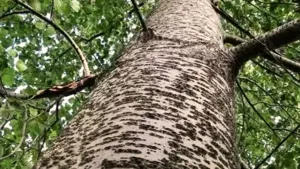





Leave your comment